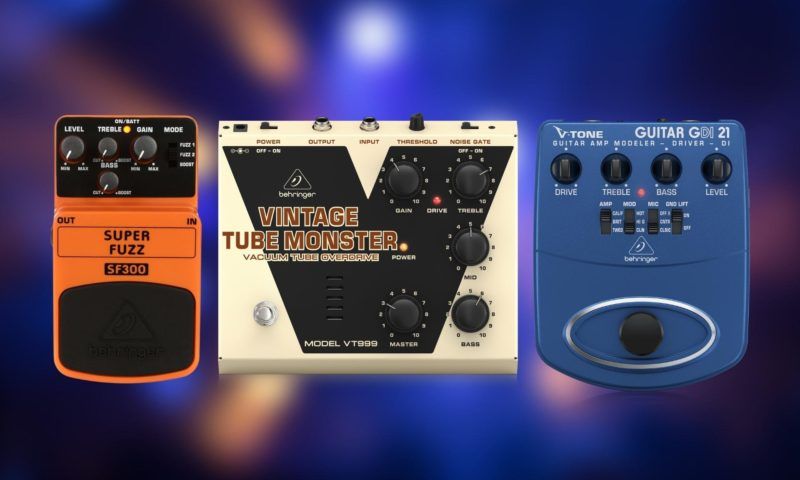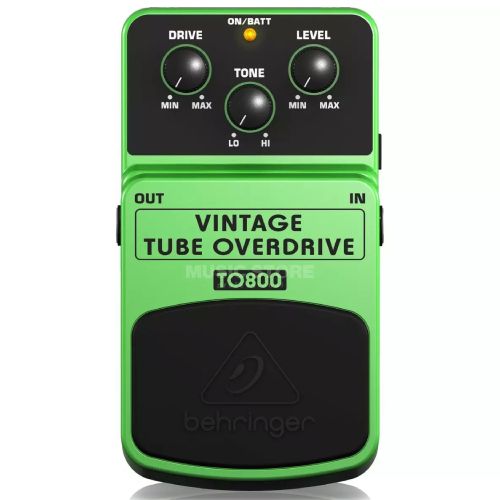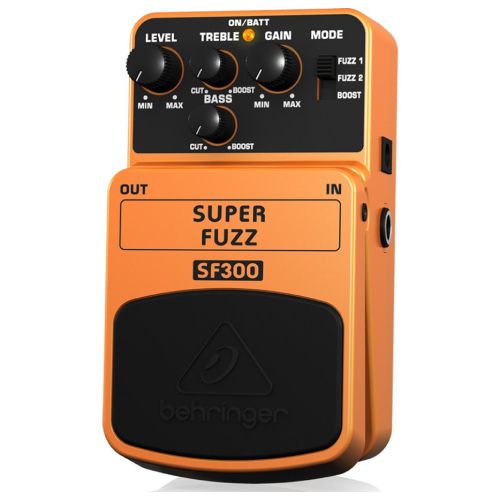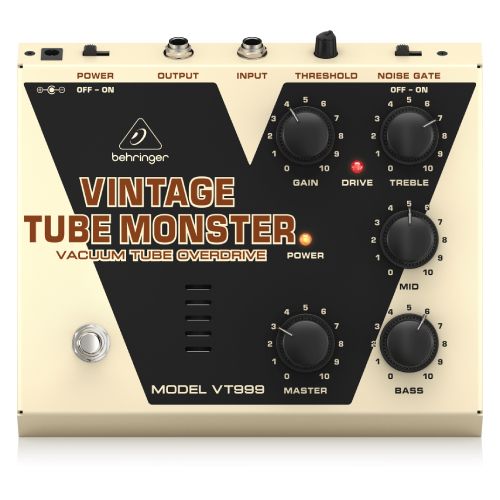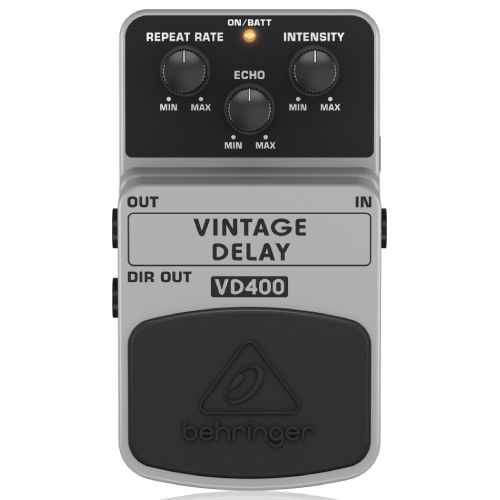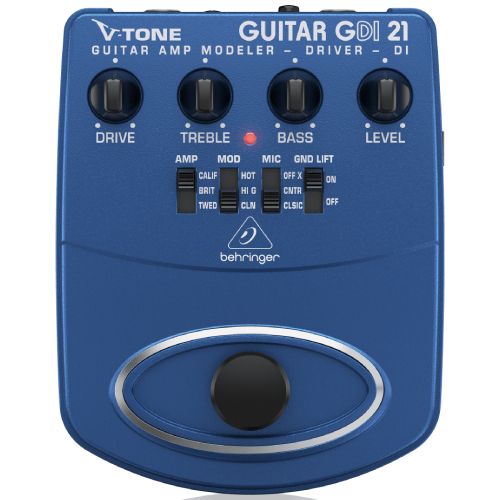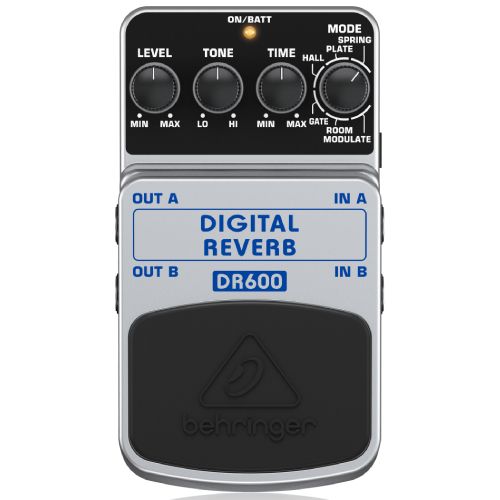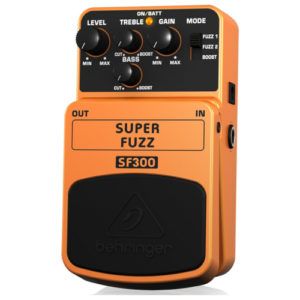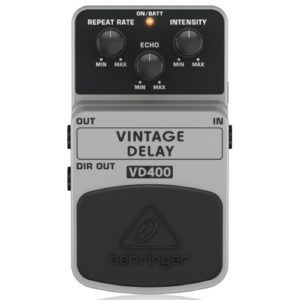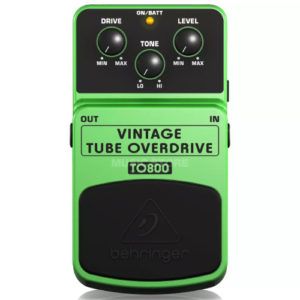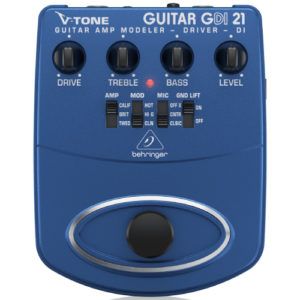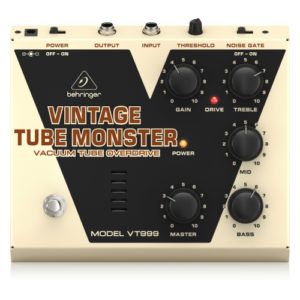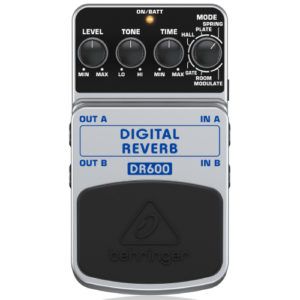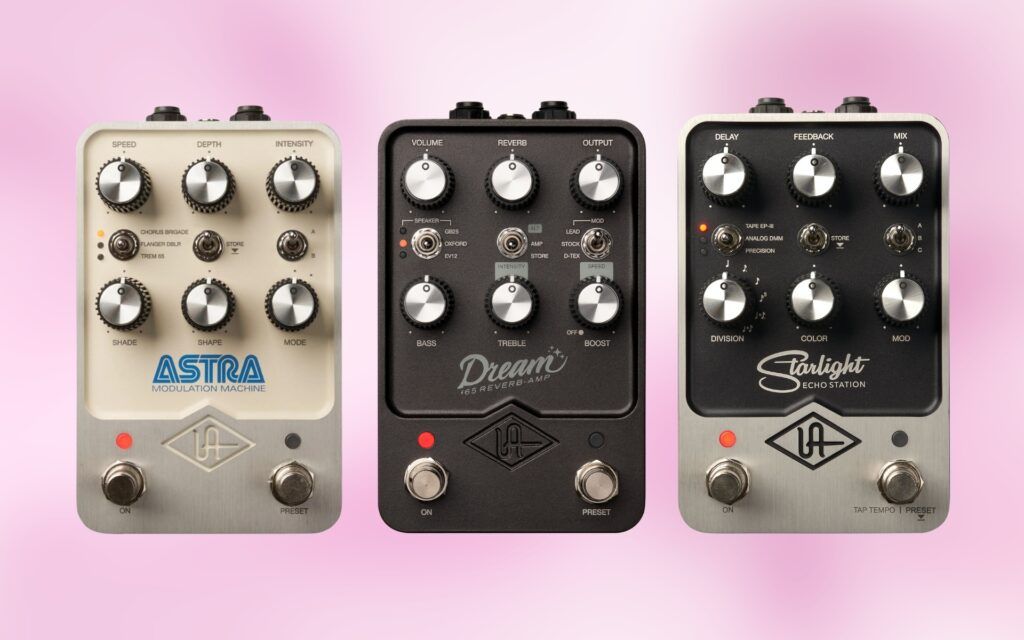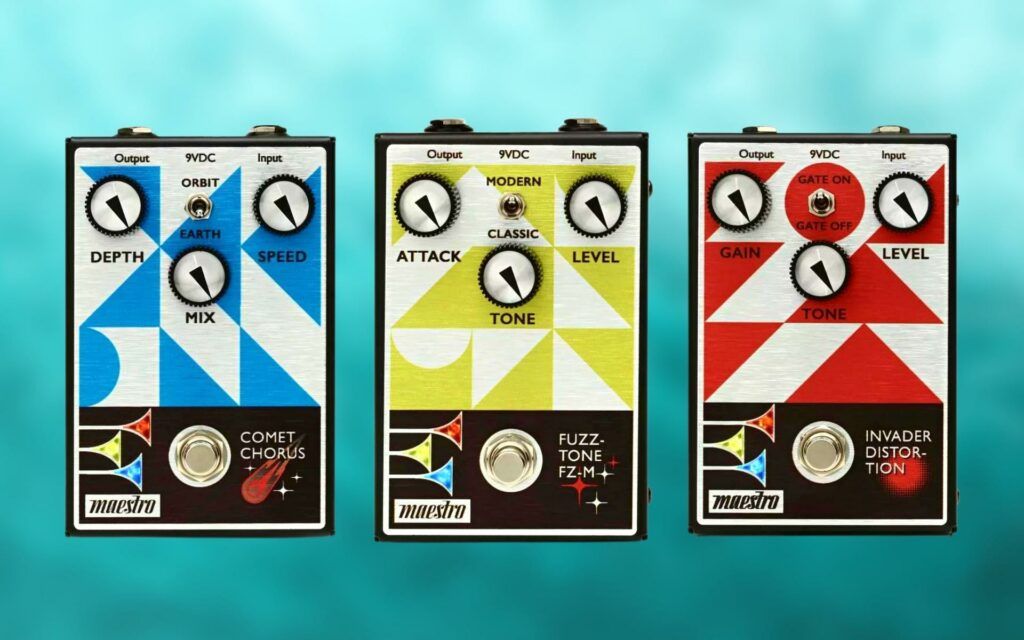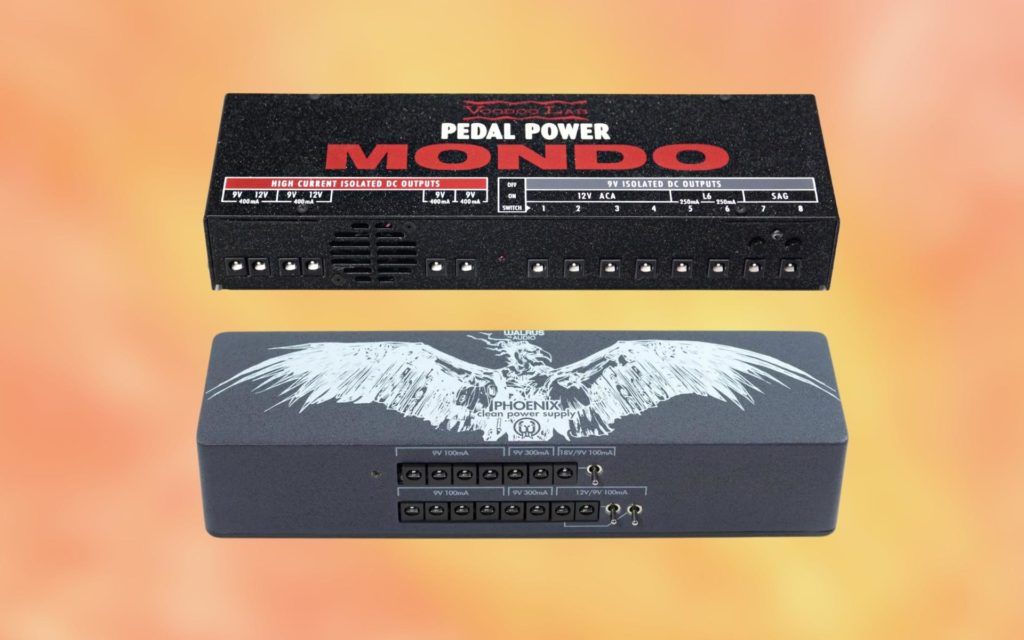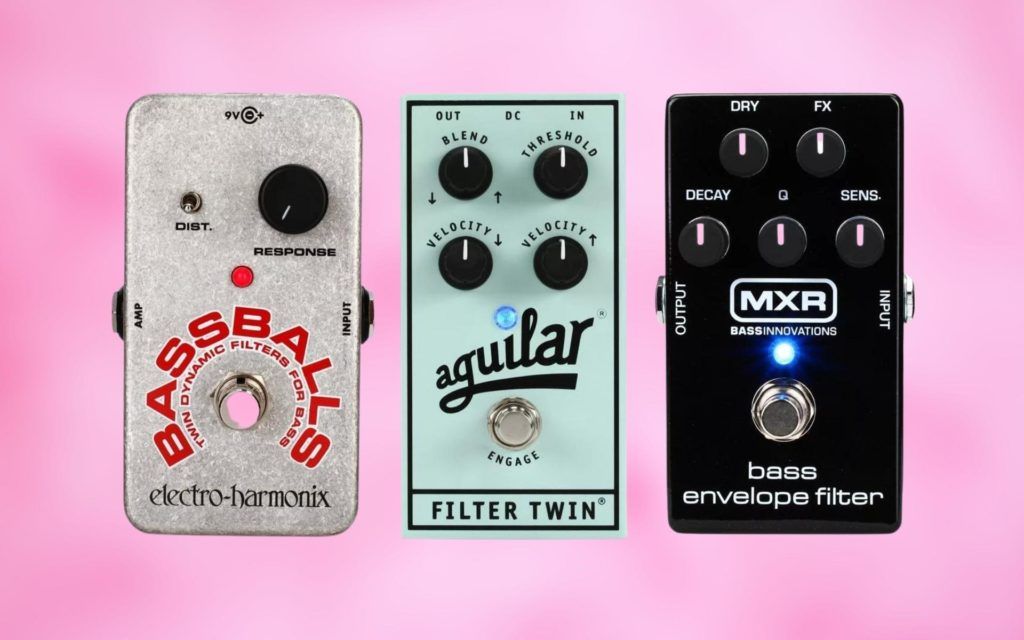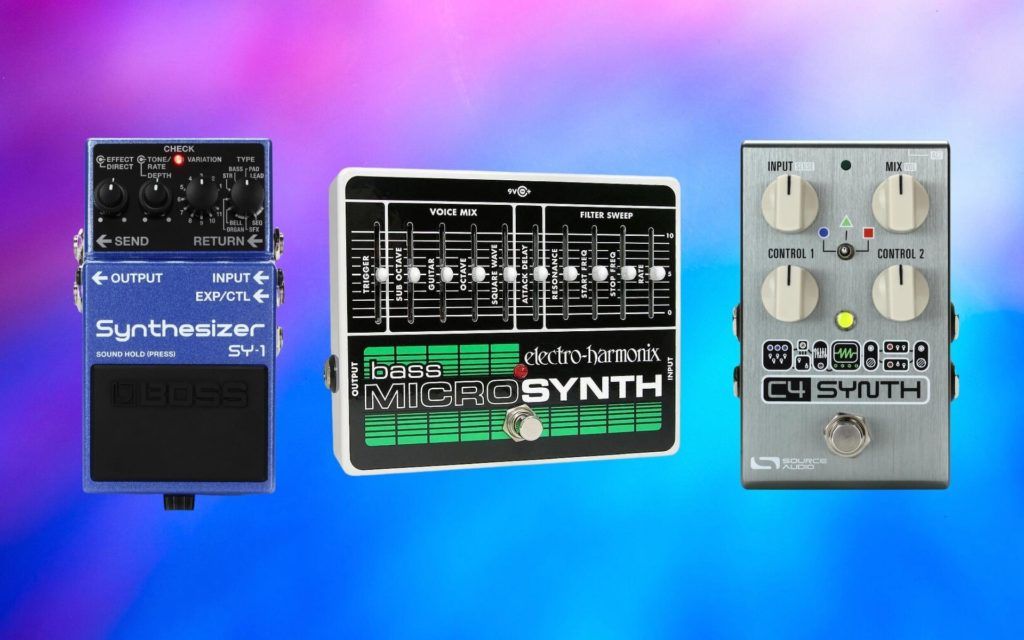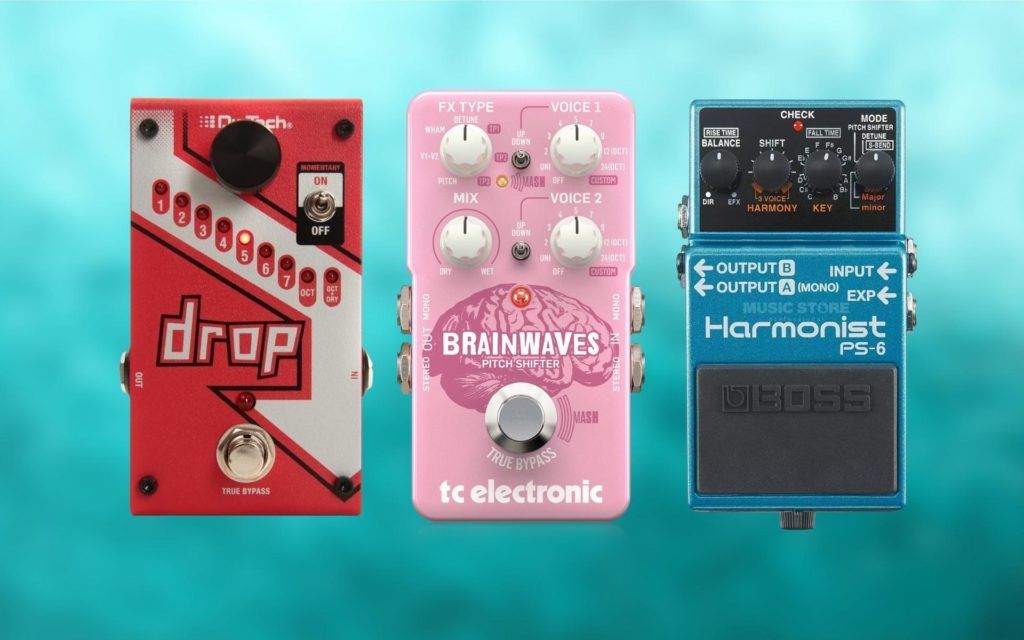We review products independently and our recommendations are genuine. If you purchase through links on our site, we may earn an affiliate commission. Learn More
Behringer’s vast range of affordable pedals is popular amongst musicians of all styles. They often feature simple control layouts but produce versatile, complex sounds.
Building up a selection of effects pedals can be costly, especially if you opt for boutique devices. Behringer’s pedals allow musicians to access high-quality effects while saving some of their budget for other equipment.
As with all pedal manufacturers, Behringer’s range contains some effects that are better than others. In this guide, we’ve hand-picked the premium Behringer stompboxes to add to your signal chain.
In a Rush’ Round-Up
How We Tested
To find the best Behringer pedals, we tested them based on specific criteria. Firstly, we considered the quality of the effect that the pedal produced, and how many different variations of that effect were housed within the device.
Then, we rated the pedals based on the ease with which they can be operated, the durability of their chassis and switches, and finally, we tested them against other popular effects to gauge whether they are good value for money.
The reviews below present the best Behringer effects pedals that we discovered through our extensive tests.
Behringer Pedal Reviews
Behringer SF300 Super Fuzz Pedal
Behringer SF300 Super Fuzz Pedal Review
Fuzz pedals are a must-have for guitarists who want to cut through to mix with their riffs and solos. The SF300 is Behringer’s flagship fuzz, offering a variety of red-hot tones that can be customized using the onboard parameters.
I rate this as one of the best Behringer pedals for several reasons. Firstly, it offers three distinctive fuzz settings, each of which significantly changes the tone and dynamics of the effect.
The “classic fuzz” setting provides you with straight-up, unapologetic obliteration of your guitar’s signal. Then there’s the “grunge” preset, which sounds great when you’re playing power chords or low-end riffs and licks.
The third setting is labeled “gain boost”. This adds a warm layer of overdrive to the guitar’s output and can be used as a useful way to quickly propel yourself above the rest of the band.
To further customize the sound of this fuzz pedal, you can tweak the onboard EQ controls and tailor the prominent frequencies to suit your style.
Features
- 3 onboard fuzz settings
- 2-band EQ control
- True bypass switching
Pros
- Produces a wide range of fuzzy tones
- Simple control layout
- Can also be used as a boost pedal
Cons
- Boost setting is noticeably louder than other settings
Behringer VD400 Vintage Delay Pedal
Behringer VD400 Vintage Delay Pedal Review
Whenever I see a pedal described as vintage, I can’t help but be a little skeptical. I’ve often been disappointed by the lack of authenticity that many pedals with that label deliver.
However, with the VD400, Behringer has nailed the sound of a vintage delay machine. Using a blend of digital and analog technology, they have compacted a range of retro and modern delay effects into this stompbox.
A large part of the VD400 Vintage Delay pedal’s success is owed to the controls that it houses. The repeat rate control is very useful for adjusting the amount of time between each delayed reproduction of the original signal.
Furthermore, you can create ambient textures or pulsating rhythmic delays by tweaking the intensity and echo rotary controls. These parameters combine to make you feel in full control of the delayed effect.
The maximum delay time that this pedal offers is 300ms, which is pretty extensive. It also has a specially designed circuit for reducing unwanted noise and preserving the tonal aspect of your guitar’s output.
Features
- 300ms maximum delay time
- Intensity, repeat rate, and echo controls
- LED battery life and status indicator
Pros
- Produces an array of classic delay effects
- Recreates analog delay accurately
- Simple and easy operation
Cons
- Sounds best on a clean amp setting
Behringer TO800 Vintage Tube Overdrive Pedal
Behringer TO800 Vintage Tube Overdrive Pedal Review
The Behringer TO800 Vintage Tube delivers authentic-sounding tube overdrive, with no noise issues and plenty of power. It’s a great tool for adding character to riffs or chord sequences and getting you that desirable ’60s guitar tone instantaneously.
With a simple three-control layout, operating this overdrive pedal couldn’t be any easier. You can use the Drive control to add gain to the signal, then use the Tone control to alter the prominent frequencies in the output.
The level control acts as a master volume, to ensure that the TO800 is dynamically consistent with the rest of the pedals in your signal chain.
While this pedal is mainly aimed at guitarists, it can also be used with bass guitar or even keyboards. This is because it affects the complete frequency range of the instrument, rather than focusing on the mids or highs.
Inside the TO800 are two diodes. Firstly, there is the 4558 IC, which is joined by the MA150. These diodes combine to produce a realistic tube overdrive that you’d expect to get from a vintage amplifier.
Features
- Uses MA150 and 4458 IC distortion diodes
- Level, tone, and drive controls
- True bypass switching
Pros
- Produces classic vacuum tube overdrive sounds
- Easy to adjust settings
- Can be powered by mains or battery
Cons
- Sounds muddy if placed towards the end of the signal chain
Behringer GDI21 V-Tone Guitar Driver DI Pedal
Behringer GDI21 V-Tone Guitar Driver DI Pedal Review
In a departure from their popular compact stompbox design, Behringer produced a versatile amp modeling pedal, the V-Tone Guitar Driver DI GDI21.
With four controls that adjust the Drive, Treble, Bass, and Level settings, you can customize the tone produced by this pedal very easily. It essentially acts as a replacement for a guitar amp, which is very useful if you need to rehearse on the road.
This amp modeling pedal sounds remarkably realistic, especially when you consider its affordable price tag. With a total of three onboard amplifier presets, you can choose from heavy distortion, pristine cleans, or a blend of the two.
In addition to being a valuable rehearsal tool, this pedal is also capable of replacing an amplifier in your live rig. Simply hook it up to the P.A, and you’ll have access to a wide range of amplified tones.
Also, you can use the device to shape the sound of your guitar recordings by outputting it into your audio interface, and essentially using it in the same way that you would utilize Guitar Rig or some other VST amp, or modeler.
Bellow the four rotary controls, you have four switches, which affect aspects like microphone placement. This is where the V-Tone excels – giving you control over the finer details of your sound.
Features
- 3 amp models
- Adjustable mic placement settings
- 2 onboard D.I modes
Pros
- Great for direct recording
- Removes the need for a guitar amp
- Combats common ground loop issues
Cons
- Bulkier than most Behringer pedals
Behringer VT999 Vintage Tube Monster Overdrive Pedal
Behringer VT999 Vintage Tube Monster Overdrive Pedal Review
The VT999 Tube Master Overdrive Pedal is designed to bring authentic tube saturation to your pedalboard – and it delivers on all fronts. while this pedal may be bulky in size, the space it takes up on your pedalboard is worthwhile when you experience the transformative effects it produces.
Behringer has installed a genuine 12AX7 preamp tube in this overdrive pedal. Rather than relying on digital distortion, they have opted for the analog format, which is evident in every aspect of the impact it has on tone.
On the top panel of the pedal, I noticed that there is a control that adjusts the threshold, and a noise gate switch. If you’re considering adding a compressor to your pedalboard, these controls will save you some money.
By adjusting the threshold, you can ensure that the output from the VT999 is in line with the dynamics of the other pedals in your signal chain, and avoid any sudden spikes in volume when the pedal is engaged.
True bypass switching ensures that your signal strength is preserved when the pedal is not in use, so you don’t need to worry about your tone being hampered.
Features
- Inspired by 12AX7 tube overdrive
- 3-band EQ control
- True bypass switching
Pros
- Sounds like a genuine tube amplifier pushed into overdrive
- The noise gate prevents unwanted hum
- Allows you to sculpt your tone
Cons
- Can not be powered by a battery
Behringer DR600 Digital Reverb Pedal
Behringer DR600 Digital Reverb Pedal Review
If you’re looking for an affordable reverb pedal, few can match the quality of the Behringer DR600. In a typical Behringer style, they have crammed an array of adjustable controls and features into this pedal’s compact housing.
This pedal provides you with a total of six reverb modes, which consist of Spring, Hall, Plate, Gate, Modulate, and Room. Each of the reverb presets has been digitally created based on genuine acoustic environments.
When combining this reverb pedal with other effects, you can expect seamless blending. It can be positioned towards the end of the signal chain for more conventional results, or towards the start if you want to shake things up!
Having the DR600 on your pedalboard is like having a reverb VST from your chosen DAW at your beck and call in a live performance situation.
The pedal can be powered either by a 9v DC battery or with a power supply. Therefore, you can use it for busking or impromptu performances, without needing mains power.
Behringer has also installed a pair of stereo inputs on the pedal so that you can combine it with other stereo pedals to enhance the effect.
Features
- Includes 3 reverb settings
- True bypass switching
- Modulate, gate and room controls
Pros
- Recreates high-end reverb unit effects
- Plenty of room for adjustment
- Sounds great when combined with fuzz or overdrive
Cons
- May require some EQ adjustments to avoid harsh tones
6L6 Tube Buyer’s Guide
It seems like every day a new effects pedals manufacturer pops up and saturates the market even further at the moment. With such a vast array of pedals to choose from, identifying a brand to go for can be overwhelming.
Behringer has enjoyed a steady rise in popularity since the early 1960s and most recently has become the go-to brand for musicians looking for affordable, reliable pedals.
Compared to the majority of pedal brands, Behringer manages to keep the cost of its devices to a minimum, so that all musicians, regardless of financial circumstances, can enjoy their transformative effects.
In addition to being highly affordable, Behringer stompboxes are also very versatile. The manufacturer produces pedals in every effects category, which are often packed with adjustable controls and parameters for shaping the sounds.
Things to consider when buying
Identify the type of effects you need
Behringer makes pedals in every effects category, so it’s important to have an idea of what would be most beneficial to your rig.
Consider the pedal size
The majority of Behringer pedals are compact stompboxes that won’t take up much space on your pedalboard. However, they do make some pedals that are significantly larger than the standard dimensions, but you’ll need to have more space to accommodate them.
Assess your effects combinations
The order that effects pedals are positioned has a dramatic impact on the way they sound. Consequently, it’s important to plan the combinations of pedals that will achieve the sound you’re aiming for.
Think about connectivity
Some Behringer pedals may have more inputs and outputs than others. This allows you to put certain pedals into the effects loop of your amplifier or split the signal if you like to use a dual-amp setup.
Behringer Pedal Sonic Qualities
There are many budget pedal brands competing with one another, but Behringer stands out amongst the crowd. The reason that they are set apart from the rest is simple – their pedals sound great for the price.
Behringer uses plastic enclosures to build its pedals, which helps to keep the cost down. This obviously makes them less roadworthy than pedals with metal housings, but it’s a key reason that they’re so affordable.
However, Behringer doesn’t compromise on the quality of the inner components which largely contribute to the effects that the pedals produce.
For example, Behringer’s vintage overdrive pedals have genuine distortion diodes installed in them, along with original op-amps. You’d expect to see these components in high-end, more expensive pedals.
How To Choose Your Behringer Pedals
As you can see from the diverse range of pedals included in this guide, Behringer doesn’t stick to one effects category.
This is one of the qualities that many musicians love about the brand – they aren’t afraid to experiment with all types of effects. The effects produced by Behringer pedals can be split into the following categories:
- Dynamic pedals
- Gain pedals
- Modulation pedals
- Timing pedals
If you’re looking for a specific effect or sound, it’s highly likely that Behringer offers a pedal that will help you to achieve it.
For those who are just beginning to amass a selection of pedals in their signal chain and are on a tight budget, investing in a mixture of Behringer pedals from each of the aforementioned categories is a great way to increase the options you have available.
For example, you could start your signal chain with the TO800 Vintage Tube Overdrive pedal, then add the SF300 Super Fuzz, before completing the chain with the DR600 Digital Reverb pedal and the VD400 delay pedal.
Once you’ve got a small selection of Behringer pedals, you can then start to experiment with the various onboard controls and parameters to create unique sounds to add to your live shows or recordings.
Behringer Pedal FAQs
Why Are Behringer Pedals Cheap?
Behringer pedals are so cheap because they are essentially copies of more expensive pedals. The circuitry used is of a very high standard, and the pedals deliver impressive effects and sounds considering the price.
The main reason that Behringer is able to keep the costs of their pedals down despite their many qualities, is because they are housed in plastic enclosures rather than more expensive, metal enclosures.
Additionally, Behringer pedals aren’t crammed with fancy additional features like many high-end pedals. They’re pretty simple and straight to the point, which many musicians would argue is why they’re so great to use.
Are Behringer Pedals Buffered?
Behringer’s pedals are all buffered, which makes them suitable for long cable runs in your signal chain. The buffer works by boosting the signal to ensure that it retains its strength as it moves through the chain.
For such affordable pedals, the buffers included on Behringer stompboxes are actually pretty good. They’ll facilitate cable runs of 20ft with ease, and prevent any of your tones from being compromised.
Behringer doesn’t include true bypass on its pedals but instead opts for buffers on all of their devices.
Where Are Behringer Pedals Made?
Behringer started out manufacturing its pedals and other products in its native country of Germany, but these days all of the products are made in China.
Behringer is owned by a company called Music Tribe, of which Uli Behringer is the chairman. The fact that Behringer pedals are made in China is another reason that the company can remain so cheap, as the labor costs are less expensive than in the USA or Europe.

